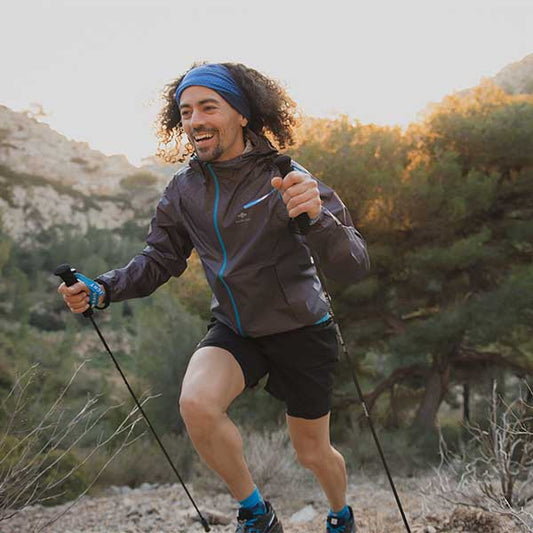Marie is a Raidlight ambassador and passionate about sports nutrition, a field in which she holds a degree. An experienced trail and road runner, she combines outdoor enjoyment with performance-driven ambition.
In this article, she shares a clear message: managing your nutrition well is a key lever to help you reach the finish line.
So, should you listen to your body or follow a precise plan? Here’s what you really need to know.
Fueling by feel: a risky freedom
A seemingly simpler solution
Listening to your body, eating what you crave, drinking when you're thirsty... On paper, it’s the simplest solution.
And it's true that it has its perks: you gain freedom, reduce mental load, and often avoid digestive issues. By naturally alternating between sweet and salty, and adjusting to your cravings, you can avoid gel fatigue or sugary overload.
It’s a strategy that can work... especially for short distances or if you know your body very well.
Yet rarely sufficient
The issue is that during a race, intensity, stress, or weather can distort internal signals. Hunger and thirst often show up too late, with real consequences for performance: energy loss, reduced focus, overheating…
On long and ultra formats, needs are simply too high to rely on sensations alone. And without experience, it's difficult to properly cover your energy requirements.
Trail nutrition plan: an effective but demanding strategy
A true performance foundation
In contrast to the “instinctive” approach, some trail runners plan everything: grams of carbs, intake schedule, product types based on terrain, intensity, even weather.
And that level of precision can make a big difference.
A well-structured plan ensures consistent fueling, better effort control, and above all, avoids energy crashes that can ruin a race.
By following your plan, you gain mental clarity: no need to think at every aid station.
You stay focused on what matters: your pace, your strategy, your race.
Provided it’s built wisely
Creating a nutrition plan isn't about filling out a spreadsheet and hoping it works.
You need to start with a simple, reliable formula: weight (kg) x 0.9 = grams of carbs per hour.
So an athlete weighing 60 kg would need around 54 g/h. Then it’s up to you to decide how to break that down: gels, bars, drinks, purées, solid food...
But beware:
👉 Too much rigidity kills flexibility. If your stomach acts up, if you fall behind, or if your gel sinks to the bottom of your pack, you need to adapt without panicking.
👉 And since many plans rely on very sugary or concentrated products, you need to test, adjust, and adapt. Otherwise, you risk overload... or having to stop at the aid station.
The plan is a tool, not a cage. Used wisely, it takes you far. Used poorly, it can hold you back.
Want nutrition tips for a race like the SaintéLyon®? Click here: Our nutrition advice for the Asics SaintéLyon®
The best strategy? Adaptation
The best approach is often a mix: a clear, tested plan during training + the ability to listen and adapt during the race.
Knowing how to adjust is what helps you become a finisher. And sometimes, it's also what opens the door to performance.
Learn more about trail nutrition: How to adapt your daily nutrition to trail running










